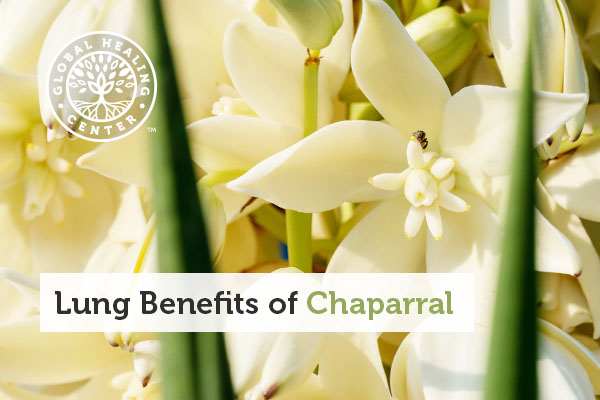
There’s good news for sufferers of upper respiratory ailments. Chaparral (Larrea tridentata) is a flowering plant found in the deserts of southwest North America. This species may provide relief via its natural, organic compounds. Native Americans historically appreciated chaparral for lung detox and helping respiratory concerns such as symptoms of bronchitis, cold, and congestion.
Chaparral is used by selective naturopaths and has gained a wave of recent attention by modern herbalists for its lung detox benefits. Most notable may be the expectorant effects of chaparral and its tendency to promote resistance to swelling and redness.
How Does Chaparral Work?
Chaparral contains nordihydroguararetic acid, or NGDA, a powerful antioxidant with a wide range of bonuses, including resistance to irritation. Most upper respiratory conditions accompany irritation and detoxifying may provide acute symptom relief. NDGA has also been shown to halt some histamine secretions in several models. Although more research is required, these findings suggest it may offer some form of therapeutic benefit for supporting the body's ability to reduce the symptoms of upper respiratory distress.
Chaparral plants, which are hearty and rarely found outside their native desert environment, have a strong, creosote-like aroma; this odor is especially pungent after a rain shower and reminiscent of the chaparral tea traditionally made by native American Indians of the southwest. Chaparral tea may help detoxify respiratory concerns associated with symptoms of bronchitis and colds by providing an expectorant action that keeps airways clear of mucus and build-up. It deserves mention that only about 40% of the available NGDA is water-soluble and more potent benefits can be found in a chaparral tincture extraction.
Benefits of Chaparral
One of chaparral’s uses, dating back the furthest, has to do with its potential to destroy harmful organisms. This can be underscored by its potent resistance to bacteria when used as a mouthwash. Research has also shown it to display resistance to fungus. When your normal lung detoxification mechanisms are compromised due to pollution from mold or spores, it’s good to have a natural, powerful option to fight back with and not rely on pharmaceutical or synthetic products.
As an overall defense during times of compromised respiratory health, research by the microbiology department at the Universidad Nacional de San Luis in San Luis, Argentina showed Chaparral to boost immune system response. This “all-around health enhancement” combined with significant antioxidant activity may offer explanation for chaparral being included in many traditional blood and body cleansing tonics and detox formulas.
References (6)
- Lü JM, Nurko J, Weakley SM, Jiang J, Kougias P, Lin PH, Yao Q, Chen C. Molecular mechanisms and clinical applications of nordihydroguaiaretic acid (NDGA) and its derivatives: an update. Med Sci Monit. 2010 May;16(5):RA93-100. Review.
- Zang LY, Cosma G, Gardner H, Starks K, Shi X, Vallyathan V. Scavenging of superoxide anion radical by chaparral. Mol Cell Biochem. 1999 Jun;196(1-2):157-61.
- Pedernera AM, Guardia T, Calderón CG, Rotelli AE, de la Rocha NE, Genaro SD, Pelzer LE. Anti-ulcerogenic and anti-inflammatory activity of the methanolic extract of Larrea divaricata Cav. in rat. J Ethnopharmacol. 2006 May 24;105(3):415-20. Epub 2006 Jan 6.
- Quiroga EN, Sampietro AR, Vattuone MA. Screening antifungal activities of selected medicinal plants. J Ethnopharmacol. 2001 Jan;74(1):89-96.
- Quiroga EN, Sampietro AR, Vattuone MA. In vitro fungitoxic activity of Larrea divaricata cav. extracts. Lett Appl Microbiol. 2004;39(1):7-12.
- Davicino R, Mattar A, Casali Y, Porporatto C, Correa SG, Micalizzi B. In vivo immunomodulatory effects of aqueous extracts of Larrea divaricata Cav. Immunopharmacol Immunotoxicol. 2007;29(3-4):351-66.
†Results may vary. Information and statements made are for education purposes and are not intended to replace the advice of your doctor. If you have a severe medical condition or health concern, see your physician.



